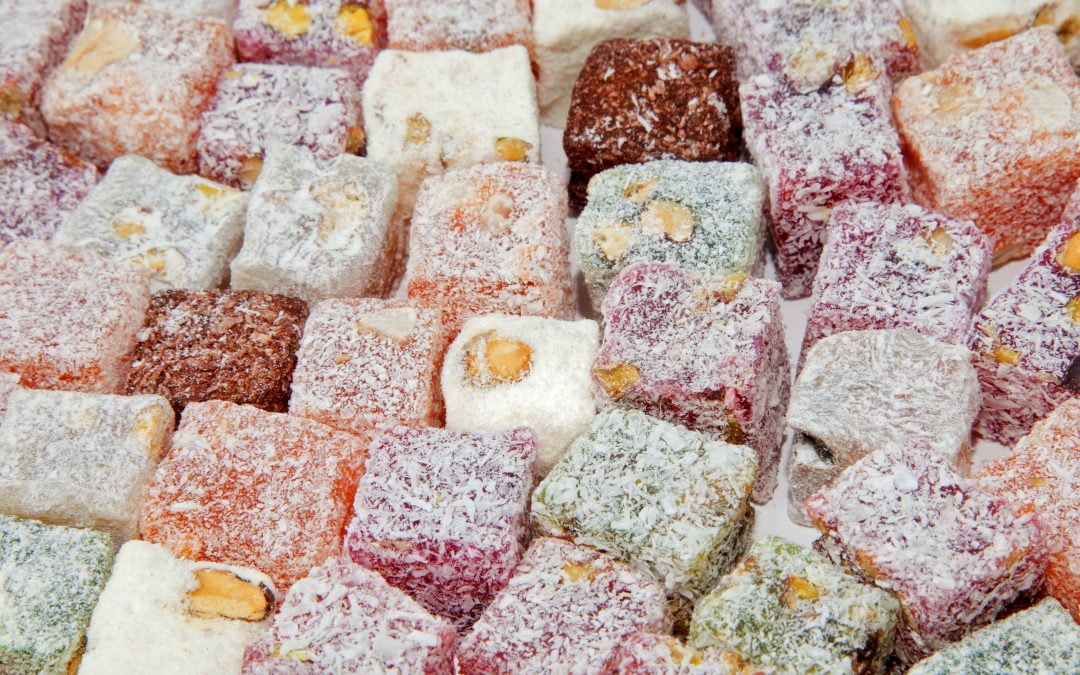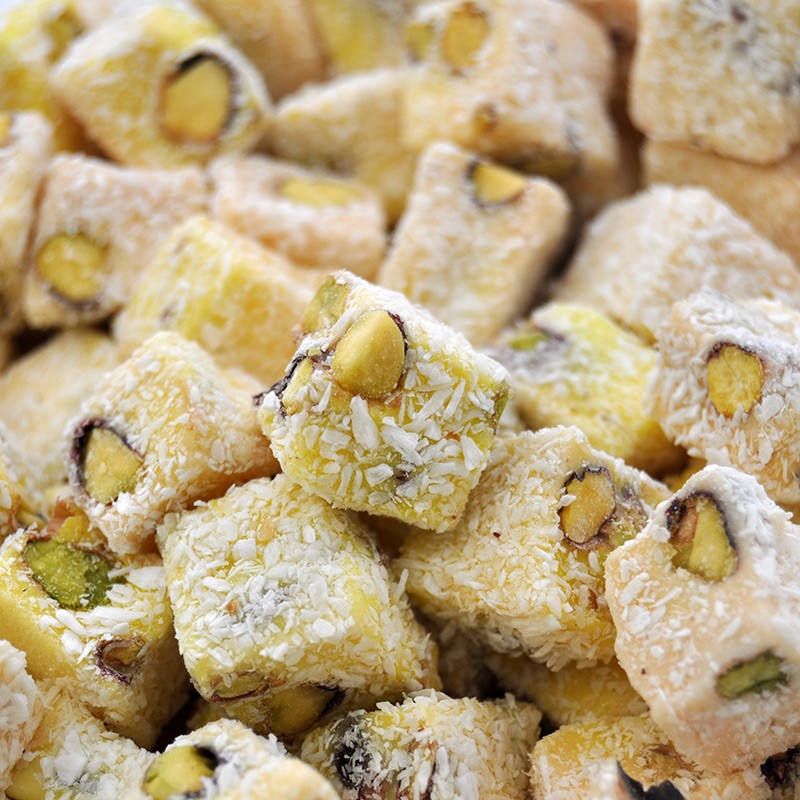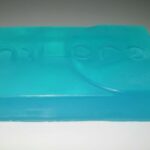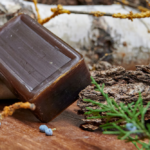What is Turkish Delight?
How is Turkish Delight made?
How did Turkish Delight enter the stage of history?
What are the nutritional values of Turkish Delight?
Turkish delight is a traditional Turkish dessert. People prepare it with water, sugar, starch and citric acid or tartaric acid or potassium bitartrate, in accordance with its technique, by adding seasonings, dried or dried fruits and similar substances to the delight mass.
How is it made?
Natural honey or molasses is the ingredigents in the first examples of it. However, with the introduction of industrial sugars into our geography, the current Turkish delight recipe applied. Accordingly, we can say that sucrose, starch, water and lemon salt, are the main ingredients of it.
In addition to these materials, many types of it can be produced by using different nuts and fruits, as well as fruit flavors and food colours. The process of making it starts with boiling the sucrose until it dissolves in water.
Then, citric acid and starche dissolve in another container and kept for identification. This mixture is then becomes mix with sugar and water and boiled for a while over low heat. At this point, it is time for the person who prepared the delight to show his skills.
Because the boiling time and consistency of the mixture reveal the skills of the master. After making sure that it is cooked and getting its consistency, the liquid is placed in molds sprinkled with starch to be shaped.
After the material is cool, they cut Turkish delights and cover them with powdered sugar so that they do not stick to each other. Turkish delights, which are packaged after all these processes, take their places on the shelves to sweeten the mouth.
How did it enter the stage of history?
Known as Turkish Delight abroad, it is one of the most beautiful and special representatives of Turkish cuisine. The first examples of this is visible in the 15th century.
On the other hand, in some sources dessert called “abhisa” of the Sassanids in Iran between 226 and 652 BC, form the origin of it. Although it appeared with different recipes and different names before. It became more and more popular in the 17th century. In the Ottoman Empire in 1777, mass production started under the name of Turkish Delight.
It first reached the Balkans and then other parts of Europe. It won’t be wrong to argue that this flavor, will always remain one of the most popular desserts.
Moreover, with the use of different nuts and fruits, as well as aromas, many Turkish Delights that appeal to different tastes. From this point of view, we can conclude that even the grandchildren of our grandchildren will enjoy this traditional taste. It has countless varieties such as double roasted Turkish Delight, Turkish delight with pistachios, Turkish Delight with cream, Turkish Delight with pomegranate, Turkish Delight with roses.
What are the nutritional values of it?
The nutritional values in it will undoubtedly vary according to the materials used in its content. However, we can say that 100 grams of it contains an average of 89.28 grams of carbohydrates. In addition, it contains 0.12 grams of protein, 0.19 grams of fat, 19 milligrams of potassium, 5 milligrams of calcium and 0.1 milligrams of iron.
It is beneficial to not onsume too much of it, which is rich in carbohydrates. It it is a healthy food but your body may have difficulty digesting this flavor. Also, it contains intense sugar and starch.
As a result, the components that make up the delight may turn into fat in the liver. Therefore, let’s not go without mentioning that excessive consumption of it can lead to weight gain.













